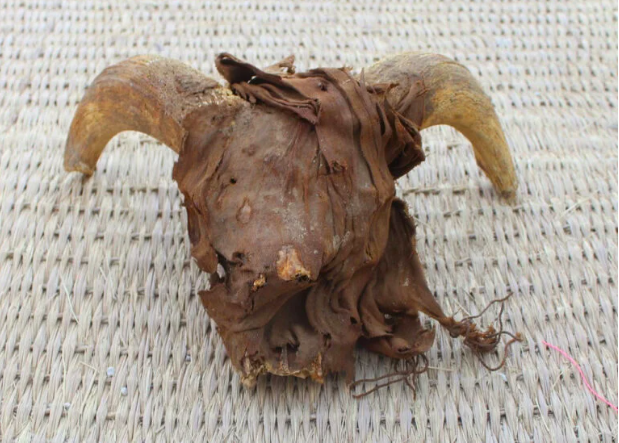Ancient Egypt excavation uncovers 2,000 mummified ram heads at Abydos

A mummified ram’s head uncovered during excavation work by an American mission from New York University- Institute for the Study of the Ancient World (ISAW) at the temple of Ramesses II in Abydos, Sohag Governorate, Egypt, in this handout image released on March 25, 2023. The Egyptian Ministry of Antiquities/Handout via REUTERS
CAIRO — At least 2,000 mummified ram heads dating from the Ptolemaic period and a palatial Old Kingdom structure have been uncovered at the temple of Ramses II in the ancient city of Abydos in southern Egypt, antiquities officials said on Saturday.
Mummified ewes, dogs, wild goats, cows, gazelles, and mongooses were found in the temple along with the ram heads, which are thought to be votive offerings indicating continuing reverence for Ramses II at the site about 1,000 years after his death, a statement from the tourism and antiquities ministry said.
It added that the discoveries would expand knowledge of the site over a period of more than two millennia up to the Ptolemaic period. The Ptolemaic period spanned about three centuries until the Roman conquest in 30 B.C.
Lesser visited archeological site
Abydos, located in the Egyptian governorate of Sohag about 270 miles (435 km) south of Cairo, is one of Egypt’s major though lesser visited archaeological sites.

A view of around 2,000 mummified rams heads uncovered during excavation work carried out by an American mission from New York University- Institute for the Study of the Ancient World (ISAW) at the temple of Ramesses II in Abydos, Sohag Governorate, Egypt, in this handout image released on March 25, 2023. The Egyptian Ministry of Antiquities/Handout via REUTERS
It was a necropolis for early ancient Egyptian royalty and a pilgrimage centre for the worship of the god Osiris.
Excavations were carried out by a mission from New York University’s Institute for the Study of the Ancient World.
Palatial structure
Alongside the mummified animal remains, the team uncovered a large palatial structure with walls approximately five meters thick from the Old Kingdom’s sixth dynasty, in addition to several statues, papyri, ancient tree remains, leather garments and shoes.
The structure could help “reestablish the sense of the ancient landscape of Abydos before the construction of the Ramses II temple,” the head of the mission, Sameh Iskander, was quoted as saying.
RELATED STORIES
Archaeologists find 800-year old mummy in Peru
Egypt ‘digitally unwraps’ mummy of famed pharaoh
Disclaimer: The comments uploaded on this site do not necessarily represent or reflect the views of management and owner of Cebudailynews. We reserve the right to exclude comments that we deem to be inconsistent with our editorial standards.
